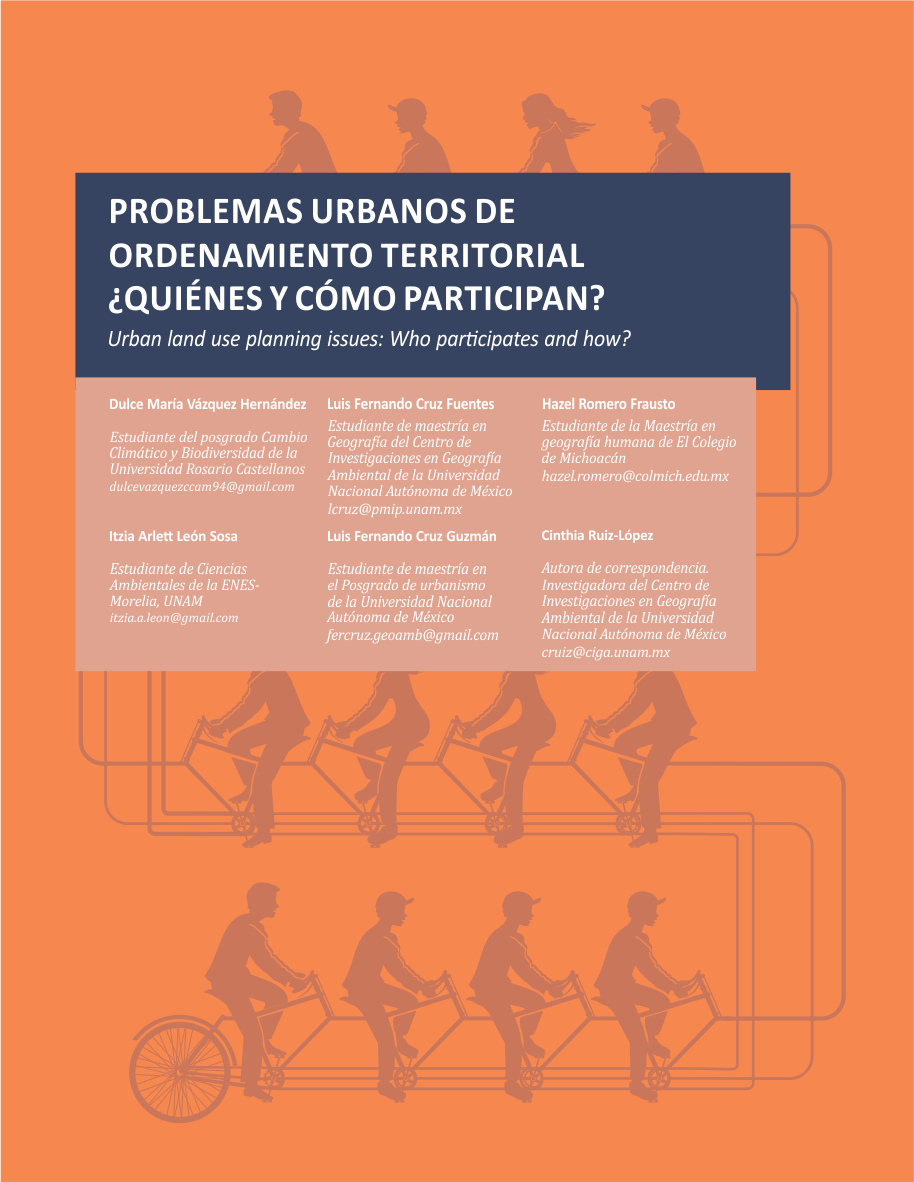
Publicado 2025-04-05
Palabras clave
- Actores claves,
- instituciones,
- ordenamiento territorial
Cómo citar

Esta obra está bajo una licencia internacional Creative Commons Atribución-NoComercial-SinDerivadas 4.0.
Resumen
Este artículo de divulgación es un ejercicio entre personas académicas y estudiantes del curso en Enfoque Sociocultural del Ordenamiento Territorial que se imparte en el Centro de Investigaciones en Geografía Ambiental de la UNAM. El objetivo del artículo es mostrar a partir de varias experiencias la complejidad del proceso de ordenar el territorio. Se entiende que el ordenamiento territorial, es más que solo un instrumento de política pública es un proceso que incide y se ve modificado por la complejidad de elementos que conforman un territorio. Para ello, se siguieron los planteamientos de análisis territorial propuestos por Morales-Barragán y Jiménez López (2018), reconociendo que los territorios son construcciones sociales formadas por las interrelaciones de actores y con elementos biofísicos, situados en diferentes escalas y que estructuran su comportamiento en instituciones. A partir de entender esa diversidad de actores e instituciones, se analizaron problemáticas alrededor del ordenamiento territorial. Se usó la metodología de Ensamble de las dinámicas territoriales (2022) propuesta por los autores Morales-Barragán y Jiménez López. Para concluir el artículo reconoce, a partir de la metodología Ensamble de las dinámicas territoriales, los actores y mecanismos institucionales en los problemas de ordenar el territorio, haciendo evidente las limitaciones del abordaje en los casos de estudio.
